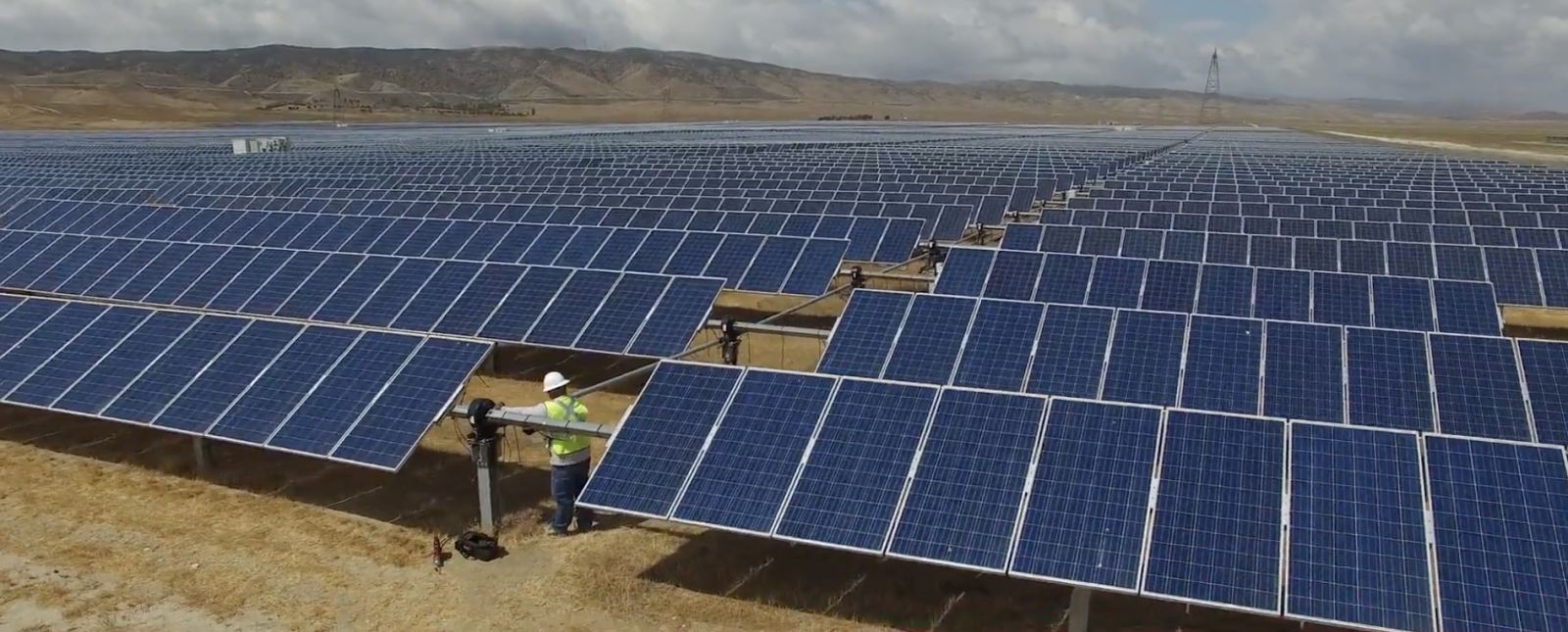Solar + Storage: The Smartest Duo on the Market
Just last year, American homeowners were expected to install a record 5.6 gigawatts of residential. While the residential storage market has been slower to take off, various factors indicate that consumers are willing to include batteries along with their PV systems.
Homeowners are feeling the painful, inconvenient effects of increasingly common grid constraints, public safety power shut-offs, and severe storms. At the same time, California's recent net metering policy changes provide lower credits for homeowners who provide solar energy back to the grid. Other states facing grid instability may soon follow suit. While this negatively affects homeowners' utility costs, it does improve the case for installing energy storage systems. Excess power generated during the day and stored in solar batteries for on- demand use allows ownership of usage and consumption and leads to full-home energy independence.
 The Inflation Reduction Act (IRA) will transform American industry and boost renewables, electric vehicles, and other zero-carbon energy sources. The bill will entice homeowners to pursue clean energy to help the environment and reduce their electric bills with less reliance on the public grid for heating and cooling, cooking, internet, lighting, and electric vehicle charging.
The Inflation Reduction Act (IRA) will transform American industry and boost renewables, electric vehicles, and other zero-carbon energy sources. The bill will entice homeowners to pursue clean energy to help the environment and reduce their electric bills with less reliance on the public grid for heating and cooling, cooking, internet, lighting, and electric vehicle charging.
As innovation has continued to evolve, manufacturing and design capabilities have flourished to create compelling solutions. Traditionally, users were required to select which energy sources to power throughout the home. Non-critical loads typically could not be covered and partial home battery backup was conceivably the only option. Today, the whole home can be powered by a solar-backed storage solution that generates enough power to run a home's air conditioning, full array of appliances, and charge an EV, all while keeping the lights on.
The best part about these product advancements and the government's considerable incentives, is that full-home energy coverage doesn't have to be more expensive than powering only critical loads. Seamless integration and unprecedented intelligence boost the benefits of grid resilience, storm protection, and lower utility bills. The market is ripe for flexible full-home energy management with easy installation, efficient usage/consumption intelligence, minimal maintenance, and customized capacity. Installers are embracing these new turnkey systems with fast configuration, lightweight battery modules, and a minimal crew required to install, set up, and support the products.
Consumer awareness is still lagging
Although seeing steady growth in recent years, according to the Solar Energy Industries Association (SEIA), the residential solar sector, particularly solar + storage, still faces significant challenges when it comes to consumer education. It's essential to inform the public about the pros, cons, and long-term outlook for residential energy storage systems (RESS).
Full-home storage with customizable capacity is available for first-time solar projects or retrofit to existing PV systems. As homeowners rely on industry experts to provide information about the best products for them, the task of teaching the benefits will fall mainly on distributors and installers who interact directly with current and potential customers.
Here are some essential points for installers to keep in mind when helping homeowners understand how they can benefit from full-home residential storage options:
Understanding the options available: Full home vs. Partial home backup
Critical load backup: Traditional residential energy storage technology can only provide enough electricity to power essentials such as heating, lighting, refrigeration, key appliances, and charging devices.
Full-home backup: Enough storage for electricity to power the entire home eliminates the need for homeowners to pick and choose what loads will be available during an outage. Full-home load management covers critical and non-critical loads such as air conditioning, water heaters, laundry, ovens and stoves, and all appliances, lights, and outlets.
Important factors for homeowners and installers to consider when deciding between partial vs. full-home backup include:
● Cost: Because residential energy storage is modular, homeowners can add incremental battery modules to accommodate more loads and maximize capacity. Installers can help homeowners understand how many units it will take to provide partial or full-home backup and the associated costs. Installing energy storage solutions in smaller increments allows them to rightsize their home, customize capacity, and power sources. as needed, ultimately leading to substantial cost savings over time.
Again, it's important to emphasize to homeowners that, with technology advancements and federal tax benefits, opting for full-home backup doesn't necessarily mean it's much more expensive. One might assume that full-home load management systems would cost significantly more, requiring multiple inverters, larger batteries, and longer installation times. However, innovative residential energy storage systems offer slim, stackable battery modules, DC-coupled hybrid inverters, and turnkey systems with increased intelligence and maximum storage capacity. Homeowners can control load management and usage/consumption in real-time, and with app-based technology, to maximize efficiency at their discretion and validate their investment.
Meanwhile, the IRA includes $80 billion in rebates. According to estimates from the nonprofit Rewiring America, families who use funding from the bill to switch to greener technology could save between $1,050 to $2,585 per year on energy bills. Homeowners can also stack federal incentives combined with those of state programs, as with solar + storage initiatives in California.
● Installation: Initial offerings of full-home power products have been complex to configure and costly to maintain, but high-tech advancements have made wiring less complicated, modules more lightweight, and installation and integration seamless. Distributors can inform installers about the intricacies of new systems so they can relay to homeowners the pros and cons of adding different-sized units for the best long-term fit.
● Space and aesthetics: Energy storage units of the past were big, bulky, and heavy. Today, they are weather-resistant, can be displayed indoors or outside, on the ground or wall-mounted, and in sleek, stackable models that occupy much less space.
● Safety: RESS have varying battery chemistry within. The most prominent global energy providers develop solutions with safety as the top priority, focusing on building long-term solutions that meet stringent safety standards. Solutions like Canadian Solar's EP Cube contain lithium iron phosphate batteries and fulfill UL 9540A performance criteria, signifying a long lifespan, thermal runaway protection, and a superior safety rating, key differentiators in the emerging marketplace.
● Performance: Manufacturers take these measures to certify that the systems ensure overall performance, chemical stability, increased capacity, and longer service life. Installers value simplicity and speed when it comes to serving a customer. The technology behind these full-home solutions helps installers work more efficiently and expand their services with reliable, high-performance products requiring minimal maintenance and support.

2023 and beyond
Contrary to renewable energy advocates, there are naysayers who downplay the rise in residential solar and its long-term global sustainability. With a lack of education, an uphill battle for market share, and much confusion and conflicting information, consumers depend on manufacturers, distributors and installers to be industry experts and trusted sources. The homeowner needs to hear how they can secure the smartest solution that tailors to their needs, helps protect the planet, and is on track for long-term efficiency and return on investment.
Understanding the advantages and details of installing a full-home backup system is key to helping consumers feel confident that they are making intelligent decisions for their homes and the environment. Homeowners can also feel good about reducing emissions by relying more on clean energy. Residential solar coupled with storage investments can help dramatically cut carbon pollution. The billions in funding promised by the IRA are set to stimulate the future of residential solar and energy storage and reduce greenhouse gas emissions by roughly 40 percent below 2005 levels by 2030.
As energy storage continues to evolve, new solutions are coming to market daily that offer sleek design, fast configuration, and built-in intelligence. Leading global energy providers must meet the growing demand for residential solar with clear communication about cost benefits, energy independence, and relief for the homeowner. The ability to power an entire house in a cost- effective manner is an exciting step in the future of residential energy independence and, in turn, combatting the effects of climate change. With further consumer education, we should see vast market growth on a global scale in the years ahead.
George Kuo is Senior Director, Product & Solutions, Americas, MSS Business Unit at Canadian Solar.
Canadian Solar | https://www.canadiansolar.com/
Author: George Kuo







